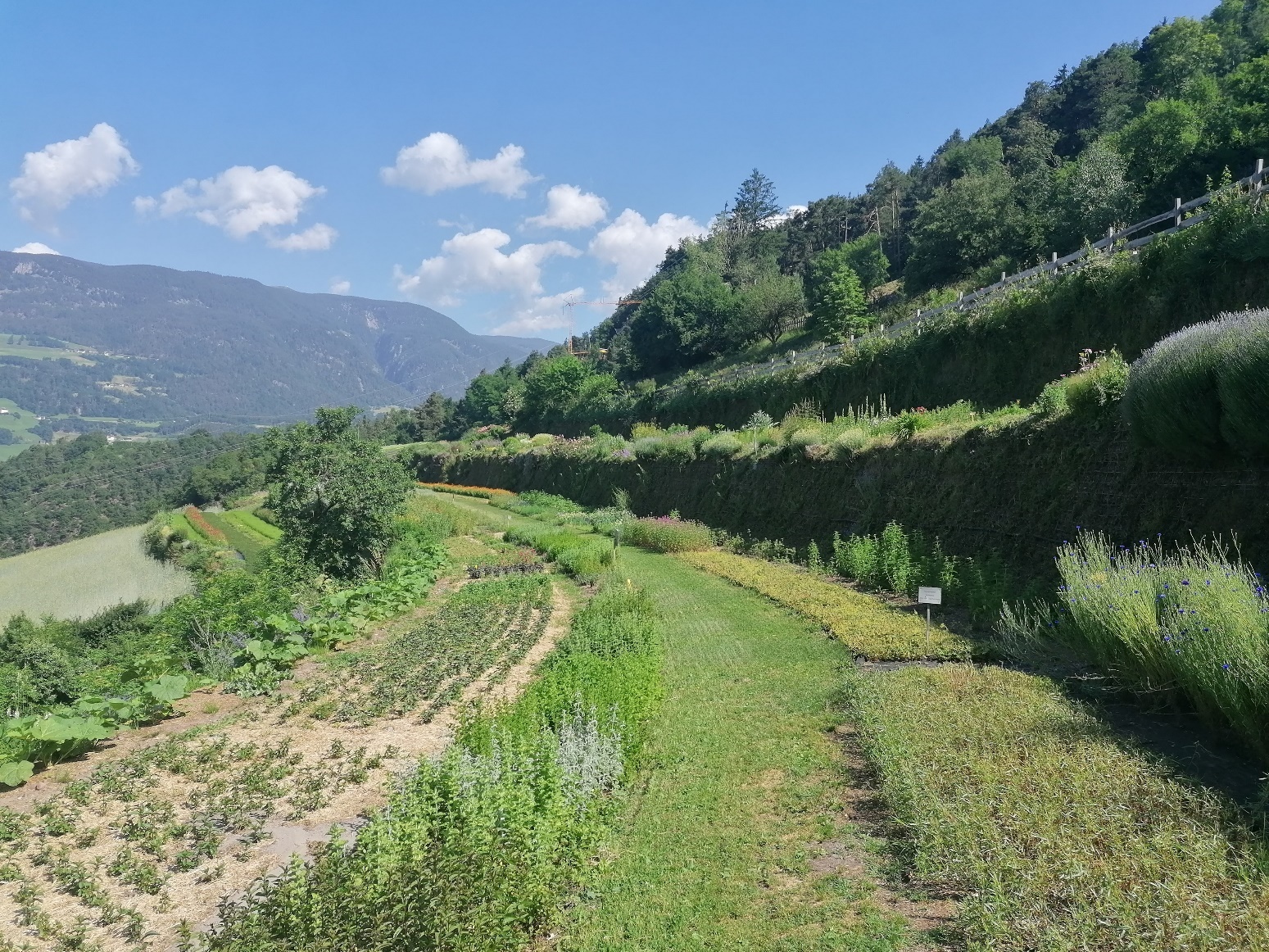Biodiversity survey in medicinal and aromatic plant fields
Abstract
Medicinal and aromatic plants (MAPs) in mountain regions are cultivated on small-scale farms, which are characterized by a great diversity of MAPs grown on a relatively small area and by a high degree of habitat complexity. Non-crop elements (e.g., dry-stone walls, hedges, etc.) are widely present in the cultivated areas and, together with the high plant diversity, may provide ideal foraging and breeding habitats for several animal groups. Here we surveyed small-scale MAP fields from a multi-taxonomic perspective considering flower-visiting arthropods, butterflies, grasshoppers, ground-dwelling arthropods, birds, and bats. A total of three MAP fields were surveyed, however not every taxon was surveyed in each MAP field. Pan traps were used in all MAP fields to assess flower-visiting arthropods with special attention to wild bees. In one of the selected fields a Malaise trap was used, and the other taxa were surveyed according to the protocol of the Biodiversity Monitoring South Tyrol. An exception was the bird surveys, which were conducted in two MAP fields. Our results indicate MAP fields to be a valuable habitat for several taxa, especially wild bees, as reflected in the positive correlation of wild bee species richness and flower coverage. Next to beneficial arthropods, potential pests, such as aphids were also highly abundant. However, natural enemies (e.g., hymenopteran parasitoids, ground-dwelling predators, etc.) possibly counteracting pests were also numerous. The butterfly and grasshopper fauna were represented by common and generalist species, while the observed vertebrate communities were relatively diverse in their habitat requirements, most likely using MAP fields for foraging. Overall, we conclude that MAP cultivation may act as resource-rich oases for several animal groups, thereby promoting biodiversity also on a broader scale.DOI:
https://doi.org/10.23796/LJ/2023.004
Published
10.08.2023
How to Cite
Obwegs, L., Nocker, L., Guariento, E., von Mörl, G., Fontana, P., Anderle, M., … Pramsohler, M. (2023). Biodiversity survey in medicinal and aromatic plant fields. Laimburg Journal, 5. https://doi.org/10.23796/LJ/2023.004
Issue
Section
Papers



